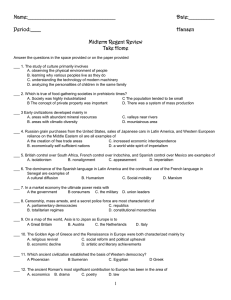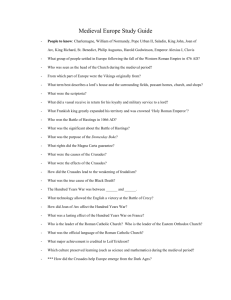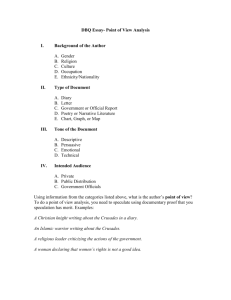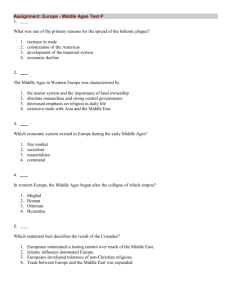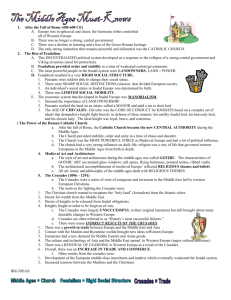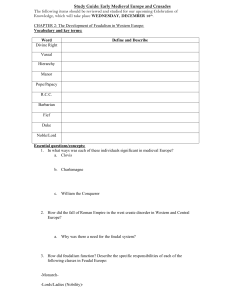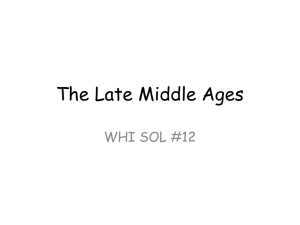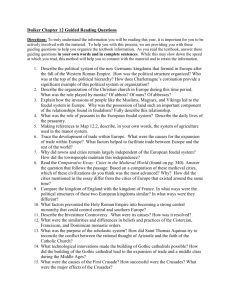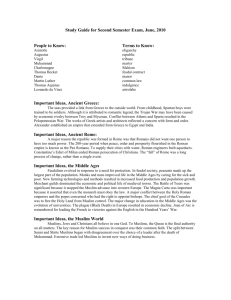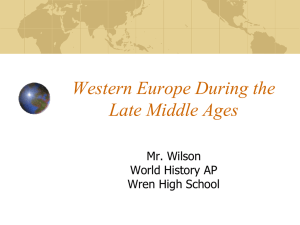Frosh Feb Takehome
advertisement
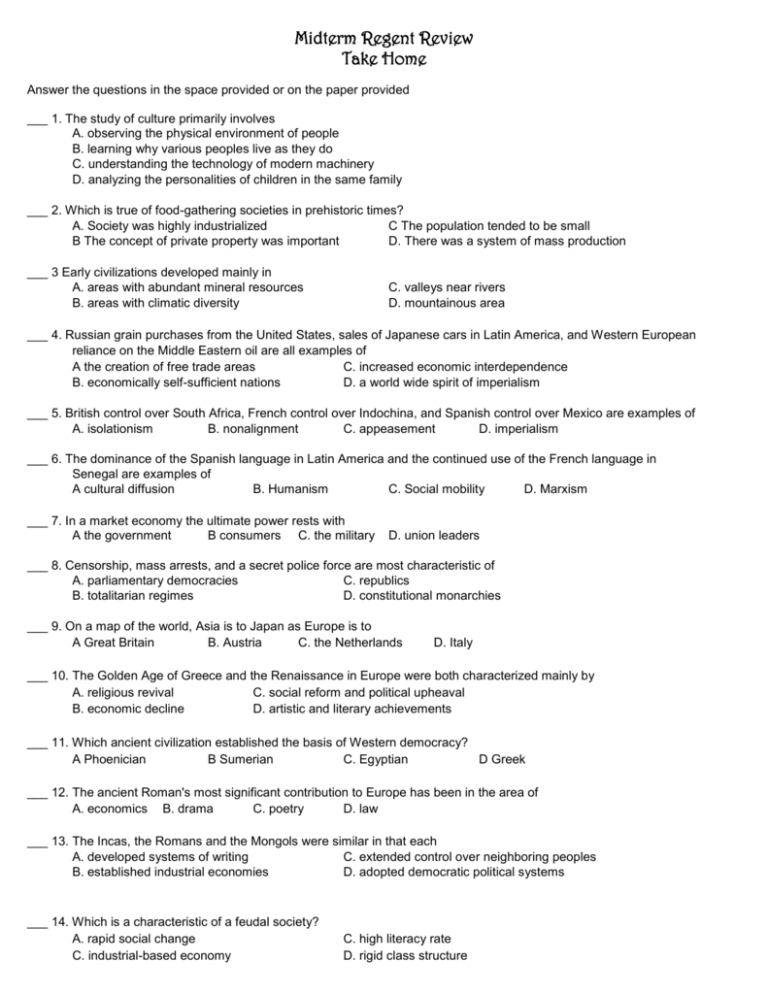
Midterm Regent Review Take Home Answer the questions in the space provided or on the paper provided ___ 1. The study of culture primarily involves A. observing the physical environment of people B. learning why various peoples live as they do C. understanding the technology of modern machinery D. analyzing the personalities of children in the same family ___ 2. Which is true of food-gathering societies in prehistoric times? A. Society was highly industrialized C The population tended to be small B The concept of private property was important D. There was a system of mass production ___ 3 Early civilizations developed mainly in A. areas with abundant mineral resources B. areas with climatic diversity C. valleys near rivers D. mountainous area ___ 4. Russian grain purchases from the United States, sales of Japanese cars in Latin America, and Western European reliance on the Middle Eastern oil are all examples of A the creation of free trade areas C. increased economic interdependence B. economically self-sufficient nations D. a world wide spirit of imperialism ___ 5. British control over South Africa, French control over Indochina, and Spanish control over Mexico are examples of A. isolationism B. nonalignment C. appeasement D. imperialism ___ 6. The dominance of the Spanish language in Latin America and the continued use of the French language in Senegal are examples of A cultural diffusion B. Humanism C. Social mobility D. Marxism ___ 7. In a market economy the ultimate power rests with A the government B consumers C. the military D. union leaders ___ 8. Censorship, mass arrests, and a secret police force are most characteristic of A. parliamentary democracies C. republics B. totalitarian regimes D. constitutional monarchies ___ 9. On a map of the world, Asia is to Japan as Europe is to A Great Britain B. Austria C. the Netherlands D. Italy ___ 10. The Golden Age of Greece and the Renaissance in Europe were both characterized mainly by A. religious revival C. social reform and political upheaval B. economic decline D. artistic and literary achievements ___ 11. Which ancient civilization established the basis of Western democracy? A Phoenician B Sumerian C. Egyptian D Greek ___ 12. The ancient Roman's most significant contribution to Europe has been in the area of A. economics B. drama C. poetry D. law ___ 13. The Incas, the Romans and the Mongols were similar in that each A. developed systems of writing C. extended control over neighboring peoples B. established industrial economies D. adopted democratic political systems ___ 14. Which is a characteristic of a feudal society? A. rapid social change C. industrial-based economy C. high literacy rate D. rigid class structure ___ 15. The Middle Ages in Western Europe was characterized by A. the manor system and the importance of land ownership B. absolute monarchies and strong central governments C. decreased emphasis on religion in daily life D. extensive trade with Asia and the Middle East ___ 16. In Europe, a long-term effect of the Crusades was A. the strengthening of the feudal system B. an increased demand for goods from the East C the adoption of Islamic religious practices D. increased European isolation ___ 17. Which is a characteristic of feudalism in both medieval Europe and Japan? A The middle class acquired more power than the other classes did B. Political power was held by a strong centralized government C. The army encouraged strong nationalistic feelings among the people D. All the people knew their roles in a rigid class system ___ 18. Which statement best describes the role of the Roman Catholic Church in Europe during the Middle Ages? A. The church encouraged individuals to question authority B. Church leaders were involved solely in spiritual activities C. The Church gained influence as the world became more secular D. The Church provided a sense of stability, unity and order ___ 19. Which is a valid generalization about the Crusades? A The Crusades strengthened the power of the serfs in Europe B. The Crusades increased trade between Europe and Asia C. The Crusades brought European influence to Africa D. The Crusades supported the idea of religious tolerance ___ 20. The Magna Carta was important to the development of democracy because it A. limited the power of the monarch C. created a bicameral legislature B. took away land from the nobles D. extended the right to vote to the peasants ___ 21. In Western Europe during the Middle Ages, education declined as a direct result of the A rediscovery of classical Greek civilization C. loss of the power of the Christian Church B. fall of the Roman Empire D. rise of absolute monarchs ___ 22. A major result of the European Age of Exploration was A. a long period of peace and prosperity for the nations of Western Europe B. extensive migration of people from the western Hemisphere to Europe and Asia C. the fall of European national monarchies and the end of the power of the Catholic Church D. the end of regional isolation and the beginning of a period of European global domination ___ 23. The humanists of the Renaissance differed from the traditional medieval philosophers in the humanists' A interest in the spiritual life of people C. lack of interest in ancient Greek and Roman culture B. rejection of Christian principles D. emphasis on the importance of the individual ___ 24. Which was a result of the Commercial Revolution? A decline in population growth in Europe B. shift of power from Western Europe to Eastern Europe C. spread of feudalism throughout Western Europe D. expansion of European influence overseas
